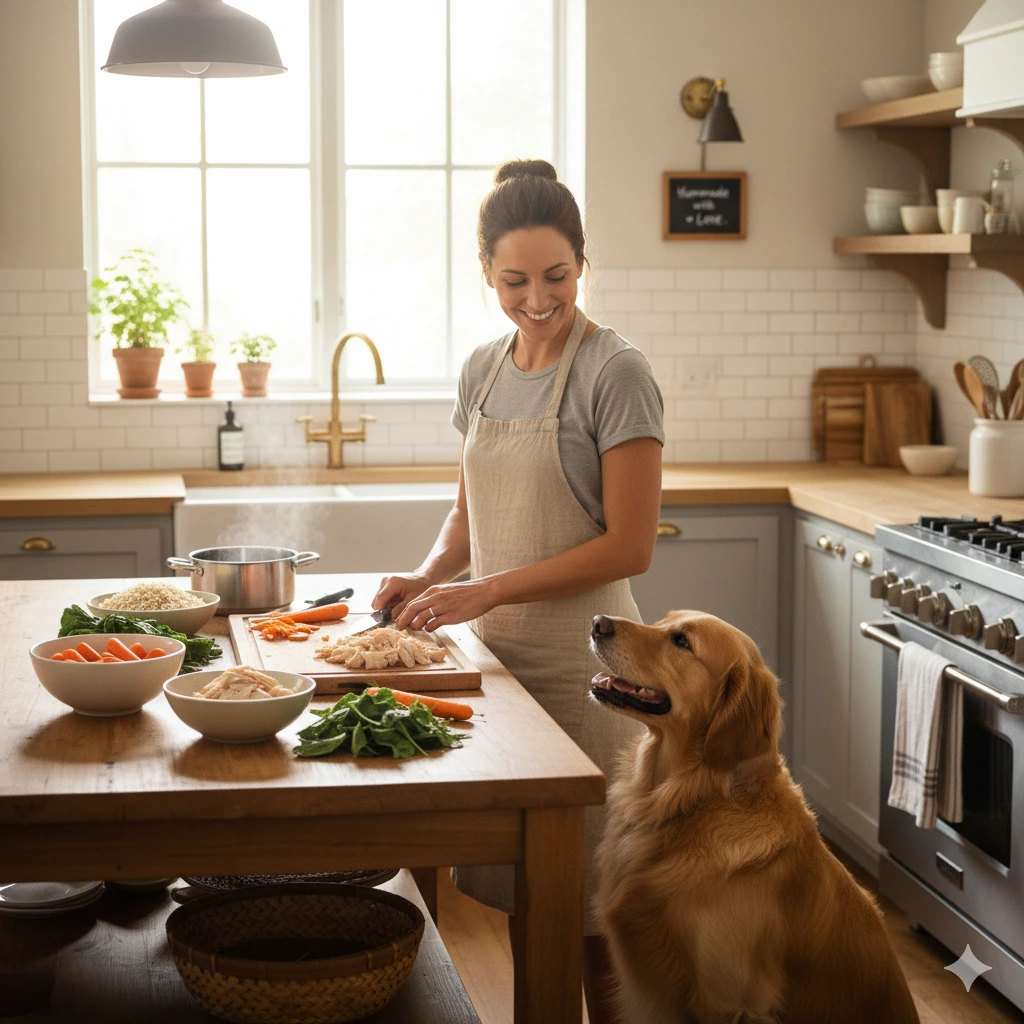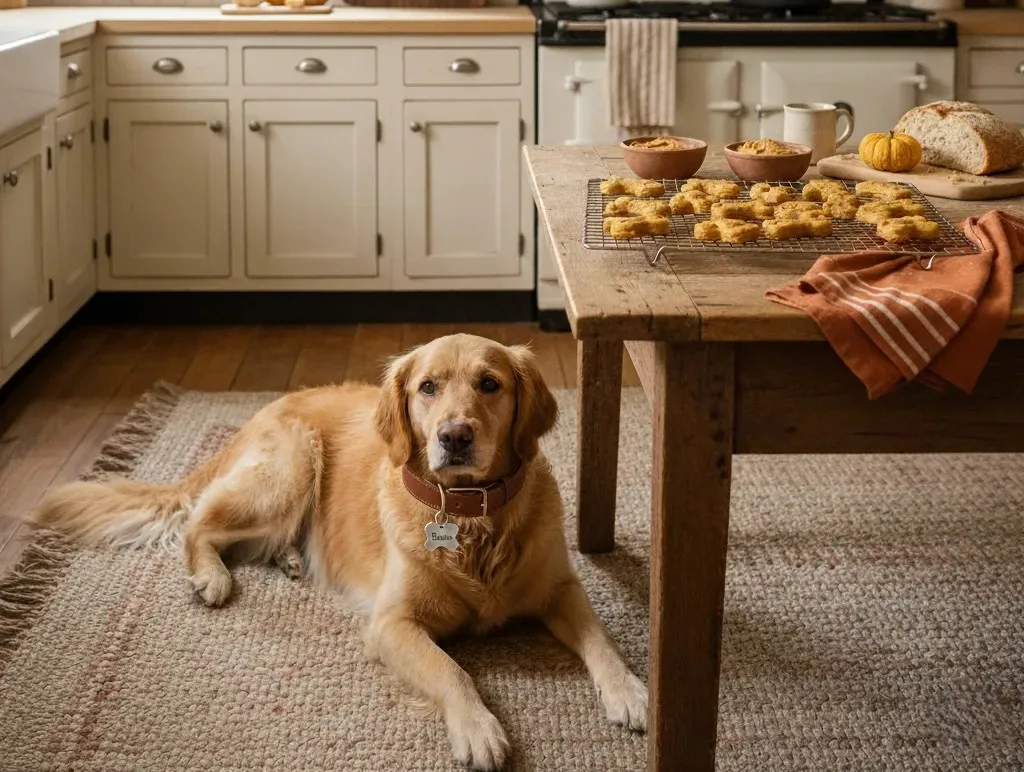In recent years, homemade dog food has become one of the fastest-growing trends among pet parents. As people become more health-conscious, they’re extending that same care to their pets, focusing on what goes into every bowl. From avoiding artificial preservatives to using fresh ingredients, the shift toward home-cooked meals for dogs represents a major change in how we approach pet nutrition. But before switching from commercial kibble to homemade recipes, it’s important to understand what makes this trend appealing, what the risks are, and how to do it safely.
Understanding the Rise of Homemade Dog Food
Pet parents today are more informed than ever. They read ingredient labels, research dog nutrition, and question what’s really inside store-bought pet food. Traditional commercial dog food often contains fillers, additives, and by-products that can be hard for pets to digest. In contrast, homemade dog food offers transparency — you know exactly what your dog is eating because you made it yourself.
The growing popularity of natural and organic lifestyles has also played a big role. When humans choose fresh, minimally processed meals, it’s only natural to want the same for their furry companions. Social media platforms like Instagram and TikTok are filled with pet owners proudly showing off their colorful dog meal preps, complete with lean proteins, brown rice, and steamed vegetables. This cultural shift has transformed homemade meals from a niche idea into a mainstream pet care trend.
Benefits of Feeding Your Dog Homemade Food
1. Control Over Ingredients
One of the biggest advantages of homemade dog food is ingredient control. You decide what goes in — and what stays out. This means no artificial colors, no preservatives, and no questionable fillers. If your dog has allergies or sensitivities, you can easily customize meals to avoid triggers. For instance, if your pet reacts to chicken or grains, you can choose alternatives like turkey, salmon, or sweet potatoes.
2. Improved Digestion and Energy Levels
Many pet owners notice that their dogs experience better digestion, shinier coats, and increased energy after switching to homemade food. Fresh ingredients are easier for the body to break down, and meals rich in natural proteins, fiber, and healthy fats promote long-term wellness. Dogs on home-cooked diets often have fewer stomach upsets and more consistent bowel movements, which are clear signs of improved gut health.
3. Freshness and Flavor
Let’s be honest — dogs love flavorful, fresh food. When you cook at home, meals are made with ingredients you’d eat yourself, such as lean meats, vegetables, and whole grains. This not only improves taste but also enhances the nutritional profile of your dog’s diet. The joy on your pet’s face during mealtime is often enough motivation to keep cooking!
4. Managing Weight and Health Conditions
Homemade dog food gives you control over calories and nutrients, making it easier to manage conditions like obesity, diabetes, or joint problems. You can tailor recipes to include omega fatty acids for joint health, antioxidants for immunity, or fiber for digestion. For senior dogs or pets recovering from illness, a soft and nutrient-dense home diet can speed up recovery and improve vitality.
What Pet Parents Should Know Before Switching
While the benefits are appealing, making homemade dog food isn’t as simple as just feeding your dog leftovers or random recipes found online. Dogs have specific nutritional needs that differ from humans, and missing key nutrients can lead to serious health problems over time.
1. Consult Your Veterinarian or Pet Nutritionist
Before making the switch, always talk to a veterinarian or a certified pet nutritionist. They can help you design balanced meals that meet your dog’s age, breed, and health requirements. Dogs need a precise ratio of protein, fat, carbohydrates, vitamins, and minerals — not just whatever looks healthy.
2. Understand Essential Nutrients
A homemade dog diet must include:
- Protein from sources like chicken, beef, fish, or eggs
- Carbohydrates for energy, such as rice, oats, or sweet potatoes
- Healthy fats for coat and brain health, such as fish oil or olive oil
- Vitamins and minerals, which may require vet-approved supplements
Neglecting any of these can cause nutrient deficiencies. For example, too little calcium can lead to bone problems, while a lack of vitamin D can affect the immune system.
3. Use Safe Ingredients Only
Not all human foods are safe for dogs. Avoid toxic ingredients like chocolate, onions, garlic, grapes, raisins, macadamia nuts, and artificial sweeteners (especially xylitol). Always double-check food safety before including a new ingredient in your dog’s bowl.
4. Portion Control Matters
Even healthy food can lead to weight gain if you overfeed. Use a vet-approved calorie chart to determine how much your dog should eat daily. Puppies, adults, and seniors all have different calorie and nutrient needs. Maintaining a healthy weight is crucial for preventing conditions like arthritis and heart disease.
5. Transition Slowly
When switching from commercial dog food to homemade meals, do it gradually. Mix small portions of the new food with your dog’s current food over a week or two. A slow transition helps prevent stomach upset and allows your dog’s digestive system to adjust smoothly.
Common Mistakes to Avoid
Many well-meaning pet parents unintentionally make mistakes when preparing homemade dog food. Some skip supplements, use unbalanced recipes, or rely solely on online sources that may not be scientifically accurate. Others forget to track portion sizes, leading to obesity or nutrient imbalances. To avoid these pitfalls, always rely on guidance from professionals and research carefully before making any dietary changes.
Pawma’s Kitchen: A Trusted Way to Start the Homemade Journey
If you’re unsure how to begin, Pawma’s Kitchen is here to help. Dedicated to fresh, wholesome, and vet-approved pet meals, Pawma’s Kitchen bridges the gap between convenience and nutrition. Each recipe is crafted with real meat, garden-fresh vegetables, and essential nutrients to support your dog’s health at every stage of life. Choosing Pawma’s Kitchen means giving your dog the taste of homemade goodness without the hassle of preparing every meal yourself.
Is Homemade Dog Food Right for Every Pet?
While many dogs thrive on homemade diets, it’s not ideal for all. Busy pet owners may find it hard to maintain consistency, and some pets with complex health conditions might require specially formulated commercial diets. The key is balance — knowing your dog’s needs and making informed decisions based on veterinary advice.
Final Thoughts
The growing popularity of homemade dog food shows a positive shift in how we care for our pets. It reflects a deeper bond — a commitment to providing love and nourishment through mindful feeding. Whether you prepare every meal yourself or partner with trusted brands like Pawma’s Kitchen, what matters most is ensuring your pet’s diet is balanced, safe, and filled with real, wholesome ingredients.
As a pet parent, you hold the power to make mealtime meaningful. When done right, homemade dog food can transform your dog’s health, energy, and happiness — one delicious bowl at a time.



